Abstract
A variety of microorganisms, including gram-negative and gram-positive eubacteria, actinomycetes, yeasts, and filamentous fungi, were tested for their sensitivity to cadmium (Cd). In general, the actinomycetes were more tolerant to Cd than were the eubacteria; gram-negative eubacteria were more tolerant to Cd than were gram-positive eubacteria. The period of exponential growth of the eubacteria and actinomycetes was extended in the presence of Cd. Wide extremes in sensitivity to Cd were noted among the fungi; there was no correlation between the class of fungus and tolerance to Cd. Fungal sporulation was more sensitive to Cd than was mycelial growth, as spore formation was inhibited at Cd concentrations that were noninhibitory to mycelial proliferation. The toxicity of Cd to the eubacteria, actinomycetes, and fungi appeared to be pH dependent, as toxicity was generally potentiated at pH 8 or 9.
Full text
PDF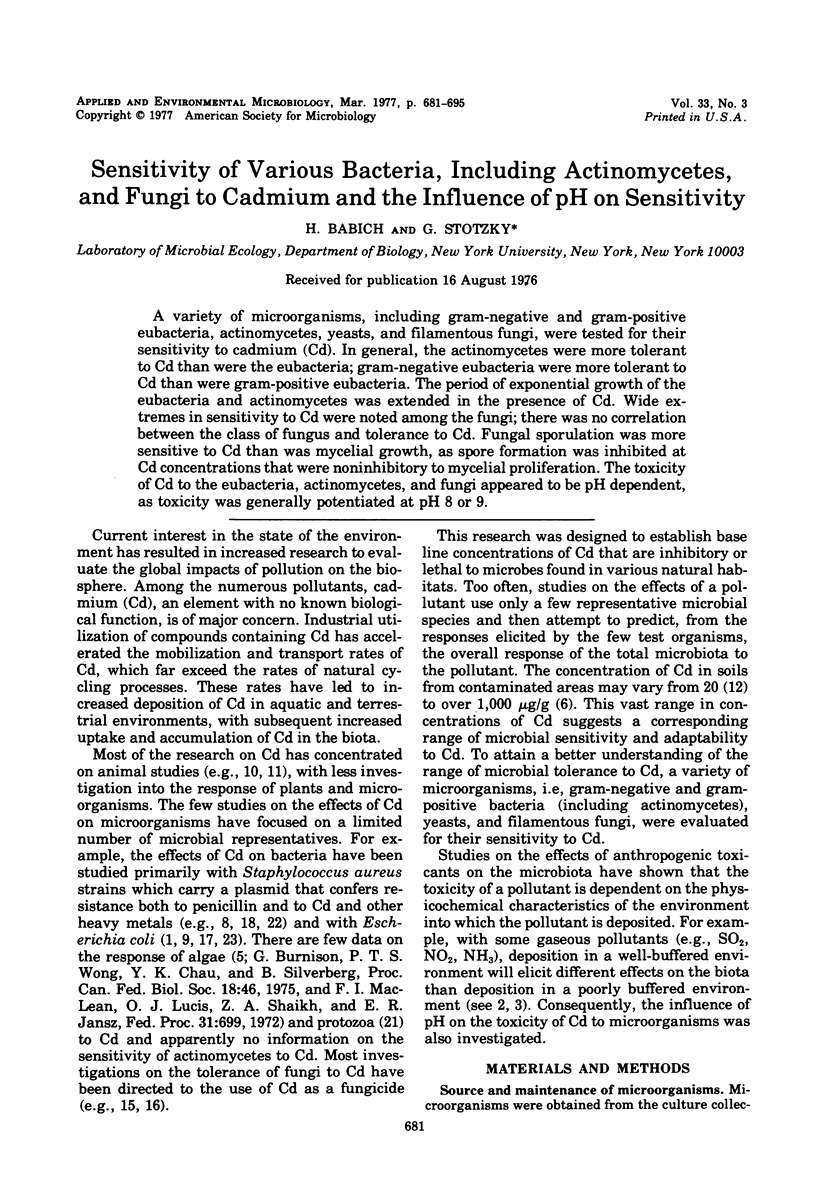


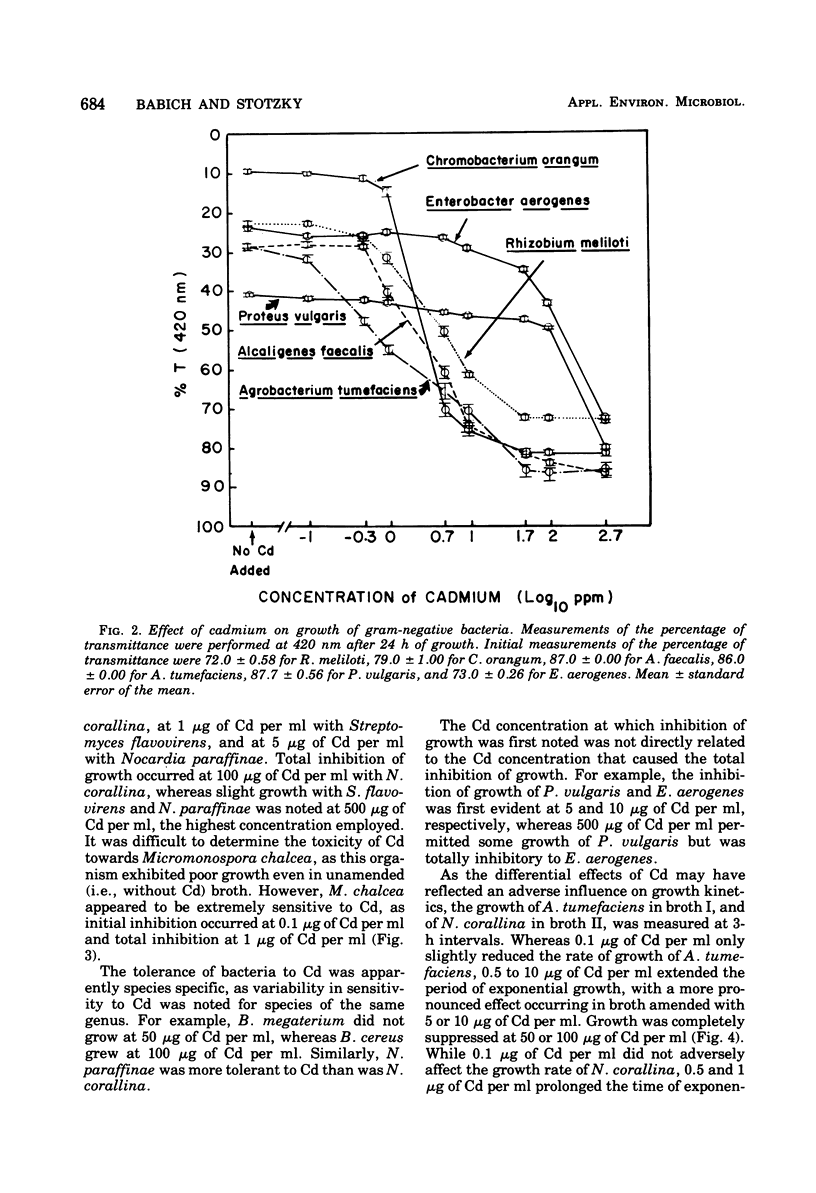
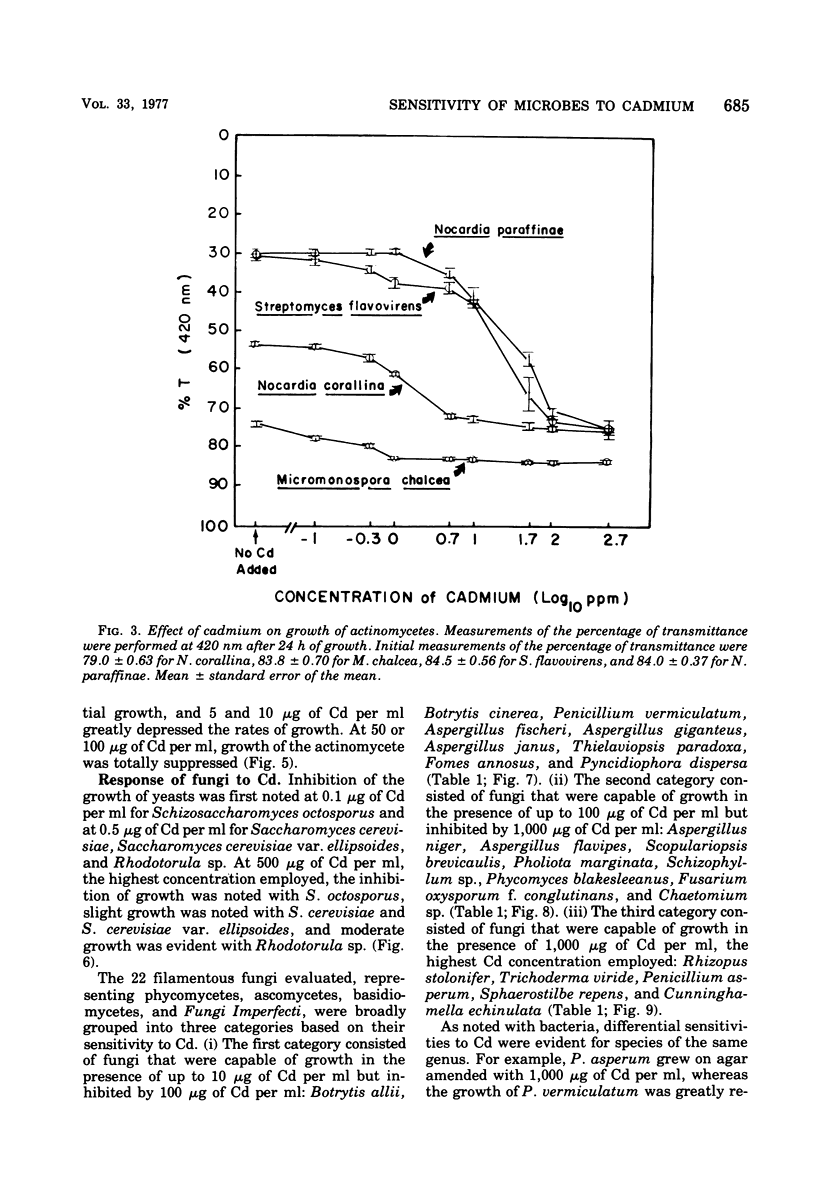

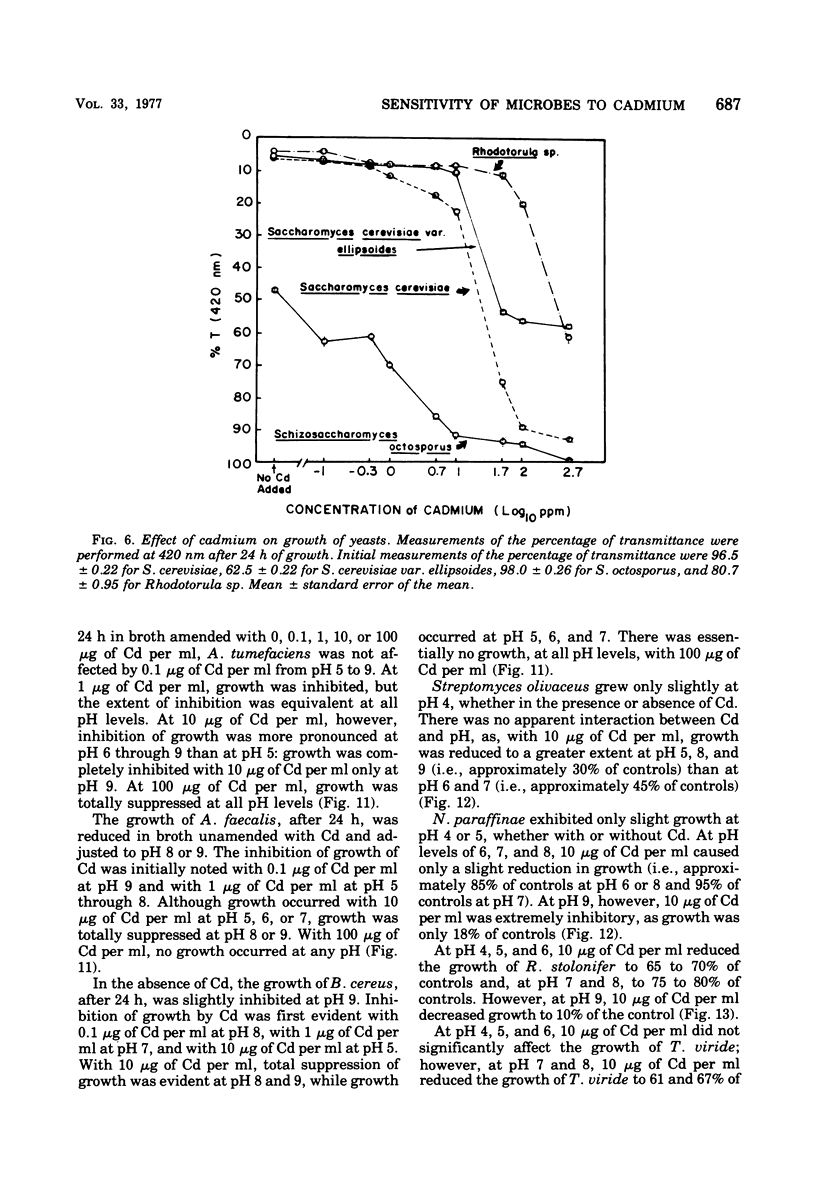

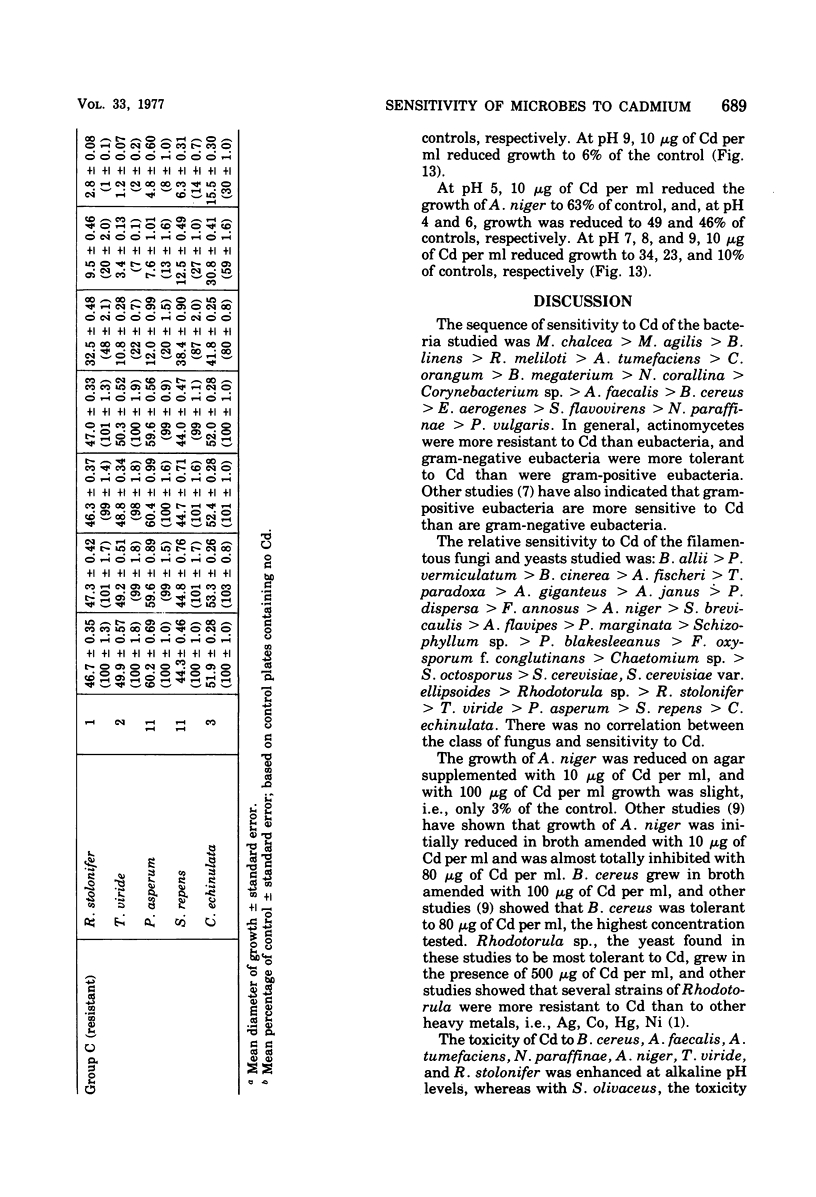


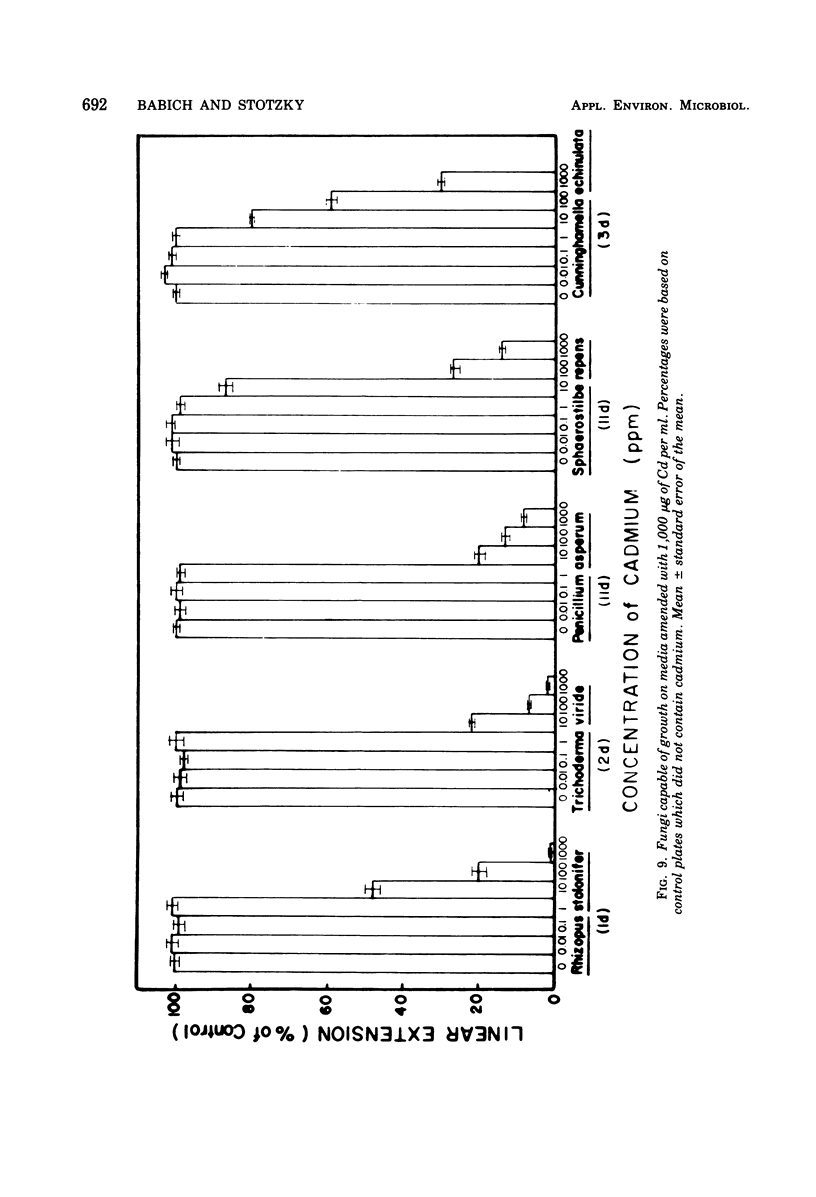
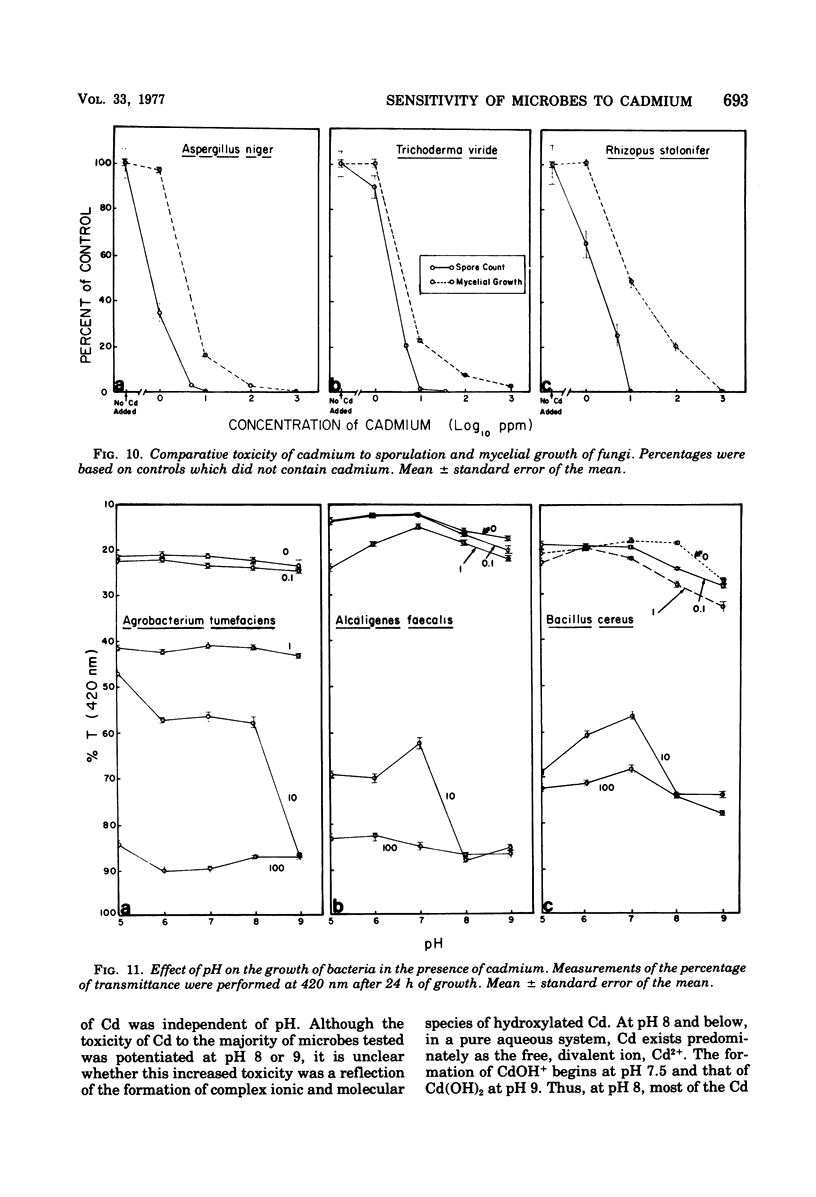


Selected References
These references are in PubMed. This may not be the complete list of references from this article.
- Avakian Z. A. Sravnitel'naia toksichnost' tiazhelykh metallov dlia nekotorykh mikroorganizmov. Mikrobiologiia. 1967 May-Jun;36(3):446–450. [PubMed] [Google Scholar]
- Chopra I. Mechanism of plasmic-mediated resistance to cadmium in Staphylococcus aureus. Antimicrob Agents Chemother. 1975 Jan;7(1):8–14. doi: 10.1128/aac.7.1.8. [DOI] [PMC free article] [PubMed] [Google Scholar]
- Doyle J. J., Marshall R. T., Pfander W. H. Effects of cadmium on the growth and uptake of cadmium by microorganisms. Appl Microbiol. 1975 Apr;29(4):562–564. doi: 10.1128/am.29.4.562-564.1975. [DOI] [PMC free article] [PubMed] [Google Scholar]
- Flick D. F., Kraybill H. F., Dimitroff J. M. Toxic effects of cadmium: a review. Environ Res. 1971 Apr;4(2):71–85. doi: 10.1016/0013-9351(71)90036-3. [DOI] [PubMed] [Google Scholar]
- Goodman G. T., Roberts T. M. Plants and soils as indicators of metals in the air. Nature. 1971 Jun 4;231(5301):287–292. doi: 10.1038/231287a0. [DOI] [PubMed] [Google Scholar]
- Huang C. Y., Bazzaz F. A., Vanderhoef L. N. The inhibition of soybean metabolism by cadmium and lead. Plant Physiol. 1974 Jul;54(1):122–124. doi: 10.1104/pp.54.1.122. [DOI] [PMC free article] [PubMed] [Google Scholar]
- Mitra R. S., Gray R. H., Chin B., Bernstein I. A. Molecular mechanisms of accommodation in Escherichia coli to toxic levels of Cd2+. J Bacteriol. 1975 Mar;121(3):1180–1188. doi: 10.1128/jb.121.3.1180-1188.1975. [DOI] [PMC free article] [PubMed] [Google Scholar]
- Novick R. P., Roth C. Plasmid-linked resistance to inorganic salts in Staphylococcus aureus. J Bacteriol. 1968 Apr;95(4):1335–1342. doi: 10.1128/jb.95.4.1335-1342.1968. [DOI] [PMC free article] [PubMed] [Google Scholar]
- Tynecka Z., Zajac J., Goś Z. Plasmid dependent impermeability barrier to cadmium ions in Staphylococcus aureus. Acta Microbiol Pol A. 1975;7(1):11–20. [PubMed] [Google Scholar]


